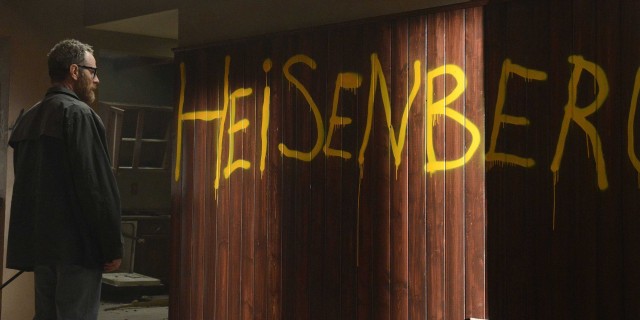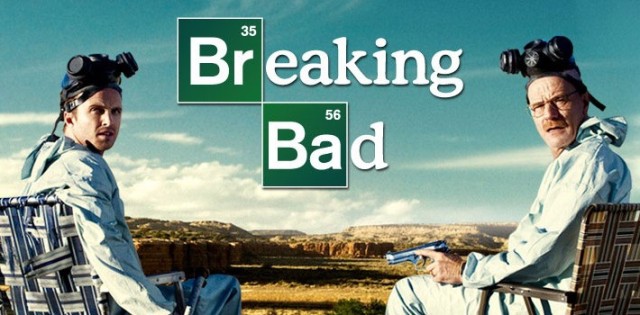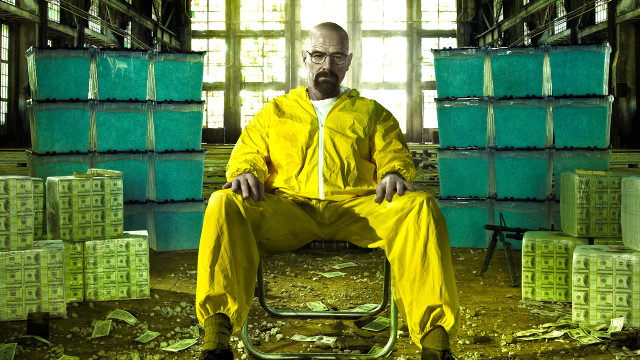If ratings or awards mean something, Breaking Bad scored a hundred per cent rating by Rotten Tomatoes, and 9.5 out of 10 by IMDb. As for awards: it won the Primetime Emmy Awards, the Screen Actors Guild Awards, Golden Globe awards, and most recently the Producers Guild Award. By these standards, it happens to be one of the most critically acclaimed series on television. By common reckoning, it is one of the most watched and studied serials, too. If all of it were true, then what is it about Breaking Bad that attracts the audience and critics alike? Does it have to do with the acting skills of all the actors; incredible if it were—or an absorbingly realistic story line?
Let there be no doubt. Breaking Bad is not an easy watch. It is deeply disturbing and a brilliant study of human nature at its most vulnerable and at its peak. Though primarily focusing on the transformation of its principal character, Walter White, from a middle-class high-school chemistry teacher to a master of his own methamphetamine empire in complicity with his partner-in-crime, Jesse Pinkman, Breaking Bad traverses various themes that provoke reflection and study in our own lives. It is about family, health, poverty, and morality as opposed to survival, drug addiction, and the desire to make money. All these themes are universal and relatable, and it is evident that the makers of Breaking Bad did not only want to provide entertainment. They also induce debates and discussions around the conduct of Walter White, who functions almost like a platform for these ideas to be shown and executed. Thus, like every great piece of creative art, Breaking Bad seeks to teach its viewers something that is more than its sum total, besides making it possible for every viewer to have her own defining moments.
Realism is often employed to reveal, repel, astound, or simply to move the senses and the mind. In Breaking Bad, Vince Gilligan takes it a higher level. Gone are the melodramatic, ostentatious and action-oriented approaches that directors and producers usually adopt to attract an easily bored audience to give them an adrenalin rush (Game of Thrones is such an example). Instead, we get an honest (sometimes rather brutal), down-to-earth and uncompromising picture of two men and their lives, and choices—some which are thrust on them; some that they make, with consequences for them and other, like it happens to us.
Not once does the camera flinch depicting all that, which might make its viewers uncomfortable. In fact, it almost dares us to look away from it, thus underlining that such a portrayal is real and thus artistically superior. It is with this confidence that the camera screens Walt’s initial humiliations, his cancer treatment, Jesse’s life and that of his drug-ridden friends; the cruelty, murder and immoral choices. The camera does not gloss over the blood and gore, and the greed and egocentricity of Walter White, who progressively becomes more and more devilish as the seasons progress. It is with such a confidence that these images are presented to us, and if there were one defining feature of the content of Breaking Bad, it would be its realism.
But what truly sets the series apart artistically is its structure. In the 4th century BC, the Greek philosopher Aristotle defined tragedy. According to him, a tragedy is supposed to be complete in itself, and through the process of arousing the emotions of pity and fear in the audience, should lead to the purging of them (or catharsis). Secondly, every tragedy has a protagonist who undergoes peripeteia (reversal of fortune), and anagnorisis (change from ignorance to knowledge). He suffers—or is blessed with, a life-altering event, and possesses a character, which though fundamentally flawed, does not give him the ability to cope with the consequences, leading to his ultimate demise. This fall leads the protagonist from ignorance, of his self and the forces pulling at him, to its knowledge. It is a fixed structure that touches upon the concept of fate in human life, of excessive passion or pride or love that lead to the final demise of the hero. It instils insecurity in the audience’s mind about their own capacity to resist such excesses, and the manner in which they would live it out.
Aristotelian’s conception of a tragedy is one of the levers upon which the Western literary tradition spins. Fed that we are on this tradition, this makes it so recognisable, too. It has been passed down the centuries, appearing most brilliantly in Shakespearian and the Jacobian plays, and it resonates, perhaps purposely, in Breaking Bad (a similar pattern is evident in the series House of Cards – if it is so, then the only logical conclusion of the series is the demise of Frank Underwood).
What is tragedy doing in Breaking Bad? Is it to show the drastic consequences of living a life primarily motivated by hubris, or corrosive pride? When Walter rages at Skylar, his wife, that he ‘is the one who knocks!’, and though these lines are celebrated among Breaking Bad fans, it essentially undermines Walter. Initially, under the pretext of cancer, the audience is in no qualms about siding with Walter in all his dangerous pursuits.
But by the fifth season Walter White is bold, ruthless and a success. Jesse Pinkman and Hank are the upholders of a morality-based life, unaffected by corrupting hubris. Hank especially personifies the strength, nobility, and fairness of a true hero, making Walter an antagonist. Like the glamourized rendition of Lucifer, proud and ruthless, but with a self-delusion and pathos that makes him magnetic, Walter White, too, as a character, attracts the viewers because of his very flaws. The script stops short of celebrating him as the hero, as its true allegiance lies with the ideals of justice, nobility and humility. And therein lies the lesson.
Because of Breaking Bad’s tragic structure, Walter White becomes almost like a type. Therefore, despite the very relatable motivations behind his actions, his character is essentially fixed throughout the series. Though Walter and Heisenberg in the first and fifth seasons seem like two different entities, they were both driven by the same values – protection of family, fierce individuality, pride and honour (which quickly gets corrupted), and a resolute desire to win. Walter seems to be an upholder of a certain manner of living that resonates and is universal, and hence despite Bryan Cranston’s deep portrayal of him, it is Jesse Pinkman’s character that is more mobile, impressionable and flexible. It is through him that we get a true glimpse of the hypocrisy of the society, and it is his latent goodness that makes him, ultimately, the more believable and realistic of the two. We might never meet a man like Walter, but we might meet a Jesse Pinkman.
This is true with all characters except Walter and the criminals, who function as prototypical heroes and villains from a traditional Western movie. Set in New Mexico, Breaking Bad almost becomes a crime thriller in between, before the humanistic aspects return at the conclusion. It is a mixture of various styles: the tragic, realistic, the Westerns etc., making it difficult to put it in a fixed box. Is it about the drama, crime, tragedy or realism? If there is one thing for certain, it is that Breaking Bad goes back to the roots of Western literary tradition and is as traditional as it gets. In this sense, it is neither very experimental, nor is it strictly novel or path-breaking. If you really look at it, there is nothing incredibly out-of-the-box about Breaking Bad. What makes it a success is its flawless execution, which so seamlessly blends it all the differing conventions together into one strand such that the differences are incomprehensible. Breaking Bad is, thus, a mosaic of Western artistic styles.
 Maybe that is why it is so critically acclaimed. During its making, the crew on the sets used to wind up and go home with an inner sense of accomplishment because they knew that this was as good as it got. After watching the quality of production of Breaking Bad, it seems difficult to tune into the any other series, even similar ones such as Mad Men or House of Cards. But, then, does it matter? Breaking Bad is a complete and full course in itself.
Maybe that is why it is so critically acclaimed. During its making, the crew on the sets used to wind up and go home with an inner sense of accomplishment because they knew that this was as good as it got. After watching the quality of production of Breaking Bad, it seems difficult to tune into the any other series, even similar ones such as Mad Men or House of Cards. But, then, does it matter? Breaking Bad is a complete and full course in itself.
By Ananya Tiwari


































